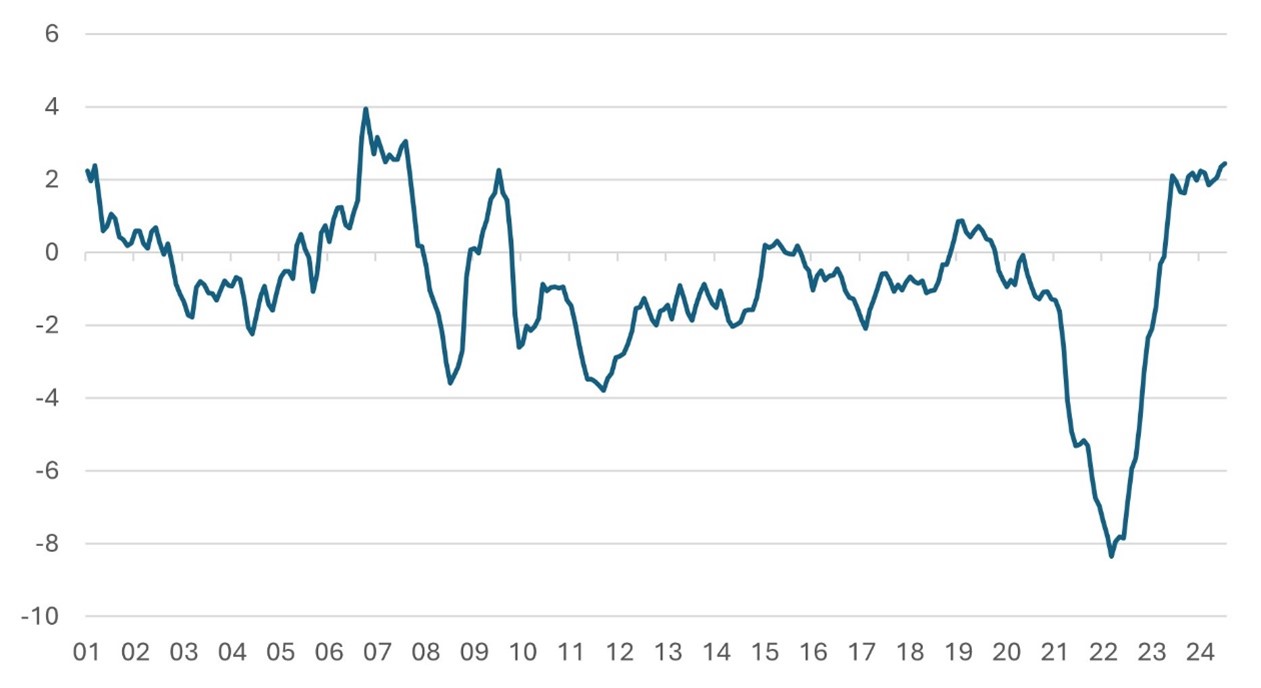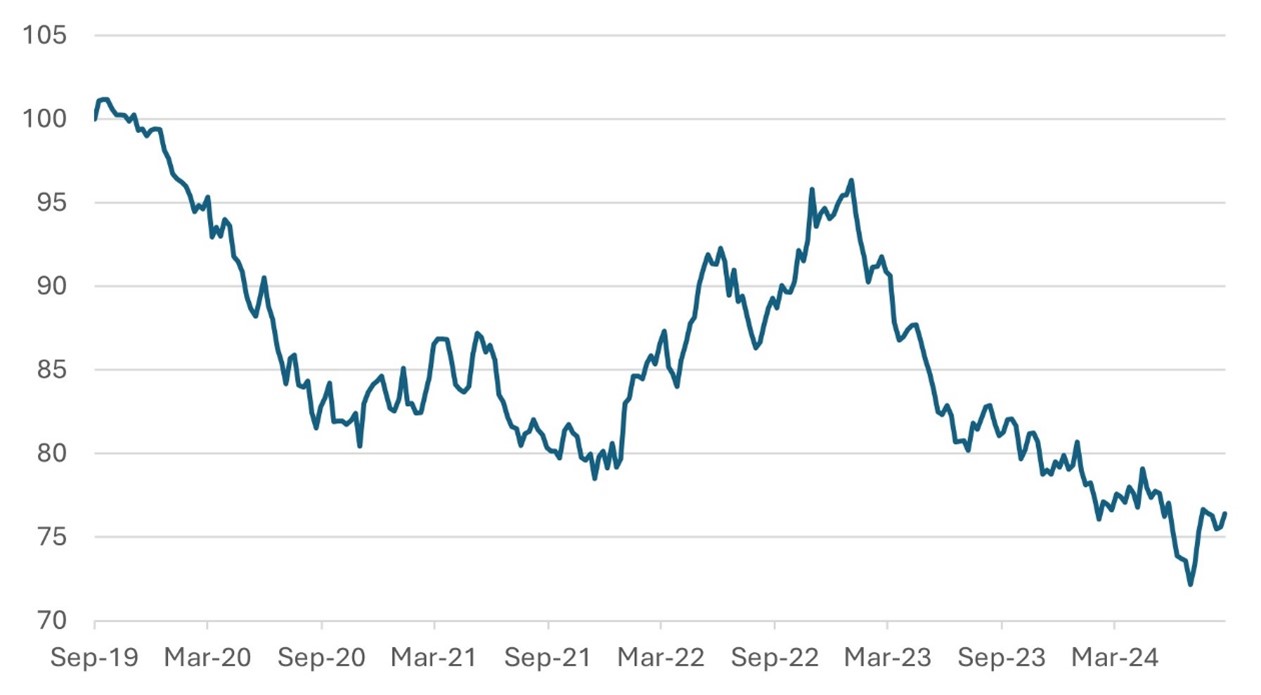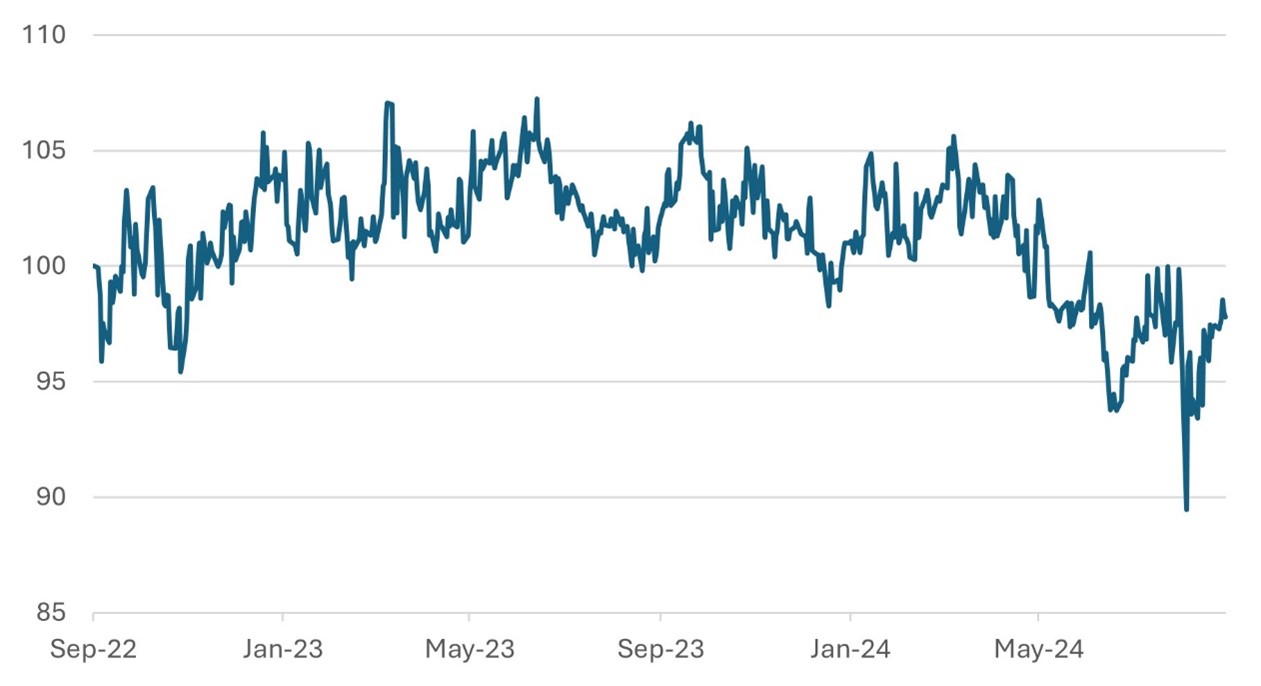By Falco
02 Sep 2024
• This week's US employment report has the power to push the Fed to cut by 50bps
• Income seeking strategies the lower risk way of enjoying a further run in US equities
• Japan continues to shape its normalisation with good outcomes for the equity market
A clearer picture on whether the U.S. Fed will cut policy rates by 25bps or 50bps at its next meeting will likely emerge by the end of this week when key economic reports, including the ISM manufacturing and services sector surveys and employment data are released. These key data points provide an important backdrop to the U.S. Fed meeting scheduled on 15 September.
We know that the Federal Reserve will cut interest rates at its next meeting: As Fed Chair Jerome Powell took the stage at Jackson Hole, he was candid in his admission of the prevailing economic scenario, noting that “the time has come for policy to adjust”. However, economists are now debating whether the Fed sees ground to effect an even steeper 50-bp cut in interest rates at the meeting. Powell has unequivocally emphasised the central bank's concerns about the weakness in the U.S. labour market. Those concerns are valid when one considers that private sector growth has slowed to less than 1% annualised (on a six-month rolling basis) – something not seen during an economic expansion since 1960. U.S. unemployment is up 0.6% this year, only slightly above the 0.5% threshold that typically signals the start of a recession.
This week’s employment data will be key. The week sees the release of the JOLTS and ADP employment surveys, and the U.S. employment report. In the latter case, the market consensus is for 165k new jobs for August, and a slight fall in the unemployment rate to 4.2% from 4.3%. However, we know from last month's data that there can be significant retrospective revisions to data, which can spring surprises. Anecdotal evidence suggests that the economy has lost momentum, which could lead to a higher-than-expected unemployment rate. We have seen a sharp loss of confidence amongst smaller companies, representing around 46% of total private-sector employment.
Lack of hiring rather than layoffs is partly to blame for the recent rise in unemployment. New entrants to the labour market need help finding jobs. Such a market situation usually presages layoffs as employers finally find that they must reduce payrolls to protect profitability.
Last week, we mentioned that peaking U.S. interest rates had led to a phase of losses in the equity market. However, if the Fed were to be bold and cut rates at a pace, this time could be different, at least over the coming months. Such Fed boldness is not what the consensus is expecting. Real interest rates are high at present (2.44%), only surpassed by real rates in 2007 when the Fed probably kept them too high for too long. Hence, it wouldn’t be too much of an ask for the Fed to front load some of the (much expected) easing cycle.
Chart 1: US Real Fed Funds Rate Adjusted for Headline Inflation

Source: Bloomberg
With so much riding on whether the Fed will cut rates boldly, staying with the market or tactically adding to positions requires a reasonable modicum of risk hedging. On the premise that the market would do well if we have accelerated rate cuts, potentially a defensive way to maintain exposure to the U.S. could be to invest in equity income, bond-like proxies. Chart 2 shows the relative performance of the Vanguard U.S. high dividend yield ETF, which has shown some 20% underperformance since January 2023 as interest rates have risen. Falling interest rates should be equally helpful, and the low beta of 0.6 for the theme should provide some comfort to those who fear a market sell-off.
Chart 2: Vanguard US High Dividend ETF Relative Performance to S&P 500
rebased to September 2019=100

Source: Bloomberg
Japanese economic data continues to support the view that there is a structural improvement in the economy. Inflation looks better established; consumers have more robust income growth and a growing spending appetite. In August, Tokyo's inflation was 2.6%, two-tenths higher than the consensus forecast. Retail sales growth has been running at 9.1% three months-on-three months. The solid, durable goods orders with motor vehicles and home appliances rising 5.6% each month-on-month, show reasonable long-term confidence in the household sector. This week, the employers' survey should show further solid wage growth of 3-4%. The Ministry of Finance's corporate survey should reflect increased corporate confidence, with capital expenditure excluding software likely to be up 8% year-on-year.
After recovering from the yen carry-trade volatility, the Japanese equity market has recovered close to its previous pre-crisis relative level.
Chart 3: MSCI Japan Index Relative to MSCI World Index
rebased to September 2022=100

Source: Bloomberg
Gary Dugan - Investment Committee Member
Bill O'Neill - Non-Executive Director & Investor Committee Chairman
2nd September 2024
The information contained within is for educational and informational purposes ONLY. It is not intended nor should it be considered an invitation or inducement to buy or sell a security or securities noted within nor should it be viewed as a communication intended to persuade or incite you to buy or sell security or securities noted within. Any commentary provided is the opinion of the author and should not be considered a personalised recommendation. The information contained within should not be a person's sole basis for making an investment decision. Please contact your financial professional at Falco Private Wealth before making an investment decision. Falco Private Wealth are Authorised and Regulated by the Financial Conduct Authority. Registered in England: 11073543 at Millhouse, 32-38 East Street, Rochford, Essex SS4 1DB
